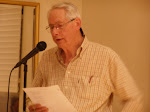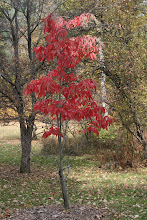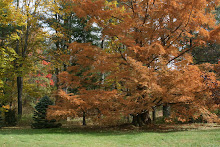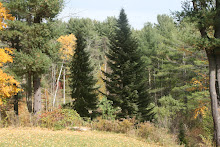
An example of the unique landscape at Pine Hollow Arboretum occurs late in the year when the view is filled with orange, rust and different brown colored trees as well as the different evergreens and yellow, brown and red deciduous hardwoods. One of the "rust" colors comes from the dozen or so Bald Cypress trees found in the Arboretum. The Bald Cypress or Swamp Cypress is a native American tree found in much of the southeastern United States from Maryland to Texas, especially inland up the Mississippi River to southern Indiana. It is common in the Everglades and is the official state tree of Louisiana. It is deciduous in the north and evergreen in the south. It has alternate, awl-shaped leaves, globose cones and sometimes aerial root knees.

The knees or upbent roots project from the root system upward above water level to facilitate gas exchange.Large trees reach 100-150 ft. tall with over 36 ft. trunk diameter. The Methuselah Cypress found in Big Tree Park in Longwood, Florida is 118 ft. tall and 3,500 years-old.

John Abbuhl points out they are a tree that will grow in standing water but they do not have to and will grow equally well in moist soil. John has found Bald Cypress can grow in the north provided the individual tree has the "right genetics". He doesn't think they have great variation in genetic make-up, as for example an apple tree has,but he has observed vast difference in growth pattern from individual tree to tree here in the Arborteum. He reported that there has been a 90% survival rate of Bald Cypress he has planted here. There is one area, however where it is different and 90% have not survived. He has observed it is where reed canary grass predominates. Bald Cypress are called "bald" because of their deciduous character. It is a member of the redwood family of trees. The true cypress belong to a separate family of trees. Like another decidous conifer found at Pine Hollow, the Metasequoia or "dawn redwood", the Bald Cypress dates from very ancient times. During the Jurasic Age it was a widely distributed tree. Two relatives of the Bald Cypress, the Weeping Bald Cypress and the Fastigate Bald Cypress are also present at Pine Hollow Arbouretum. The wood of the Bald Cypress was used by Seminoles for building their houses, canoes and for special ceremonial objects. The Choctaw Indians used the bark for string and rope. Making the wood useful is the fact it is extremely rot and termite resistant. In its native habitate it has been much used for roof shingles and traditionaly has a special use for greenhouse racks and benches. There is a current environmental concern over the use of cypress mulch as opposed to using cedar mulch. Damage to the ecosystem is being caused by the ravaging of cypress swamps in the south for mulch production. Cedar mulch seems more renewable and a more green choice













